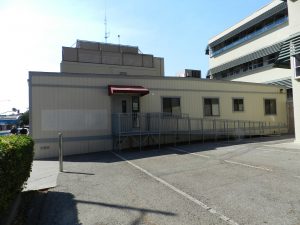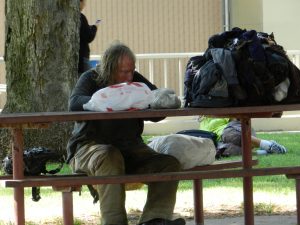
News that Stanislaus County’s Focus on Prevention program for the homeless would soon establish an access center to connect homeless people with a wide range of services was generally greeted with enthusiastic approval. Those not in the cheering section included many volunteers and professionals long-experienced at dealing with homeless people and their issues.
While it may be puzzling to some why a central location with access to services doesn’t provide much excitement for veterans in the homeless field, that’s because the average citizen misunderstands not only the causes of homelessness, but homeless people in general.
According to the dominant narrative, once a homeless person gets help dealing with his or her problems, the issue of homelessness is ended. So it is that a broad range of services are indeed available for homeless people—everything from drug abuse programs, to mental health programs, to tutoring on how to apply for jobs.
The programs themselves are generally excellent, and the people who staff them top-notch. The problem is that almost all the programs feature homelessness as the end result. And there’s no mystery why.
Consider the homeless population of people who are mentally ill. Oftentimes, many benefit from appropriate drugs and therapy. Stanislaus County has excellent facilities that not only deal with mental health, but with drug abuse. Treatment can be for as few as three days to as long as ninety days.
The problems begin when treatment ends. Unless there is a transition from treatment to housing, the homeless person who entered the program homeless exits the program homeless, with nowhere to go but back to the streets. People experienced in dealing with homeless people see this happen over and over again, especially with homeless people who have no incomes.

Even for those with incomes, housing is agonizingly problematic. Generally, top income for a homeless person is around $900 a month; many have much less, and large numbers have no income at all. People with drug or alcohol problems can generally find a room in a “clean and sober” house for around $600 a month. The room almost always features at least one roommate, and often more. Even people without such problems often find they can afford nothing other than shared quarters with people who drink or use.
And while it may seem to make sense to house people together who share a desire to free themselves from addiction, oftentimes one resident’s weakness proves too big a temptation or problem for others, and the entire enterprise falls apart. This is especially true in homes where there is little to no management oversight.
The outcome is predictable. Those who stray from their promise to stay clean and sober are evicted, end up back on the streets, and start yet another cycle of homelessness and recovery. Or, those who were sober to begin with seek escape, even if it means homelessness.
In other cases, homeless people simply can’t afford housing of any kind. In the words of one veteran of homeless outreach, “They’re homeless because they don’t have enough money.” While this observation sounds simplistic, it’s far more astute than blaming homelessness on defects in character, especially since such “defects” exist as much among people who are housed as among those who aren’t.
The notion that homelessness can be fixed the way one fixes a car—by getting it serviced—ignores the hard economic realities driving homeless numbers ever upward. Though everyone knows we have an affordable housing crisis, and most people know incomes for working people have stagnated and jobs are disappearing, homelessness is still viewed as a character defect or disability that can be “fixed.” Until we realize that view is fundamentally flawed, access centers will be just another stop on the circular path to life on the streets.

It seems to start with the label “homeless”. This label becomes a mask to the real issues and most of all, a mask to the humanity necessary to fix the “homeless” problem.
The reason that I constantly declare that the homeless count(s) are far too low and inaccurate, is that the definition of a homeless individual is one that is either assumed by their appearance, accessories or answer to the question – “are you homeless”? –
There are many, many things that we take for granted – we that are not homeless – and fail to realize that to go from homeless to not homeless is nearly impossible as once someone is homeless – there is simply a great dark void in which activities of daily living cannot possibly take place without the direct action of an outside influence of some sort.
Drugs, alcohol and mental illness only make this worse, but these are not the mainstay components that cause and maintain homelessness in all instances. But they are the most recognizable since these afflictions often lead to the most extreme cases and these are the ones we will see.
For there to be any real hope in addressing the problem of homelessness in any type of an effective way, a base must be provided. A place to be and the amenities that are needed so that one may not only acquire work, but be able to maintain it. The ability to create and maintain a lifestyle –
Homelessness in America is simply this – nowhere to be. If you have nowhere to be, you have nowhere to go. Without goals, one is doomed to an existence that only leads to impoverished sickness and death.